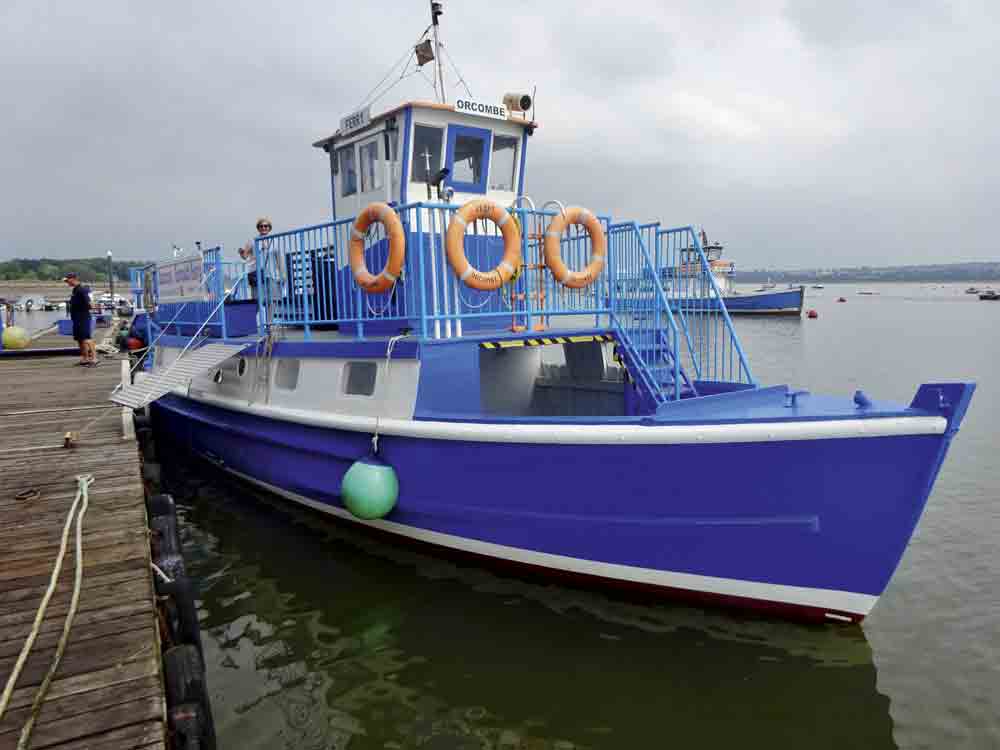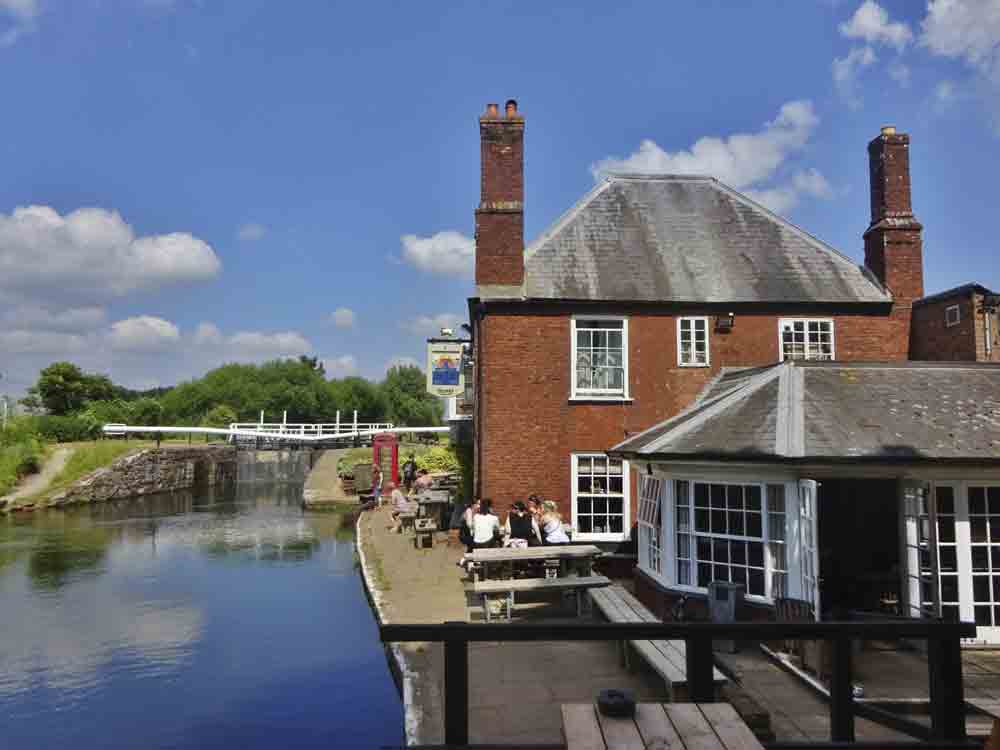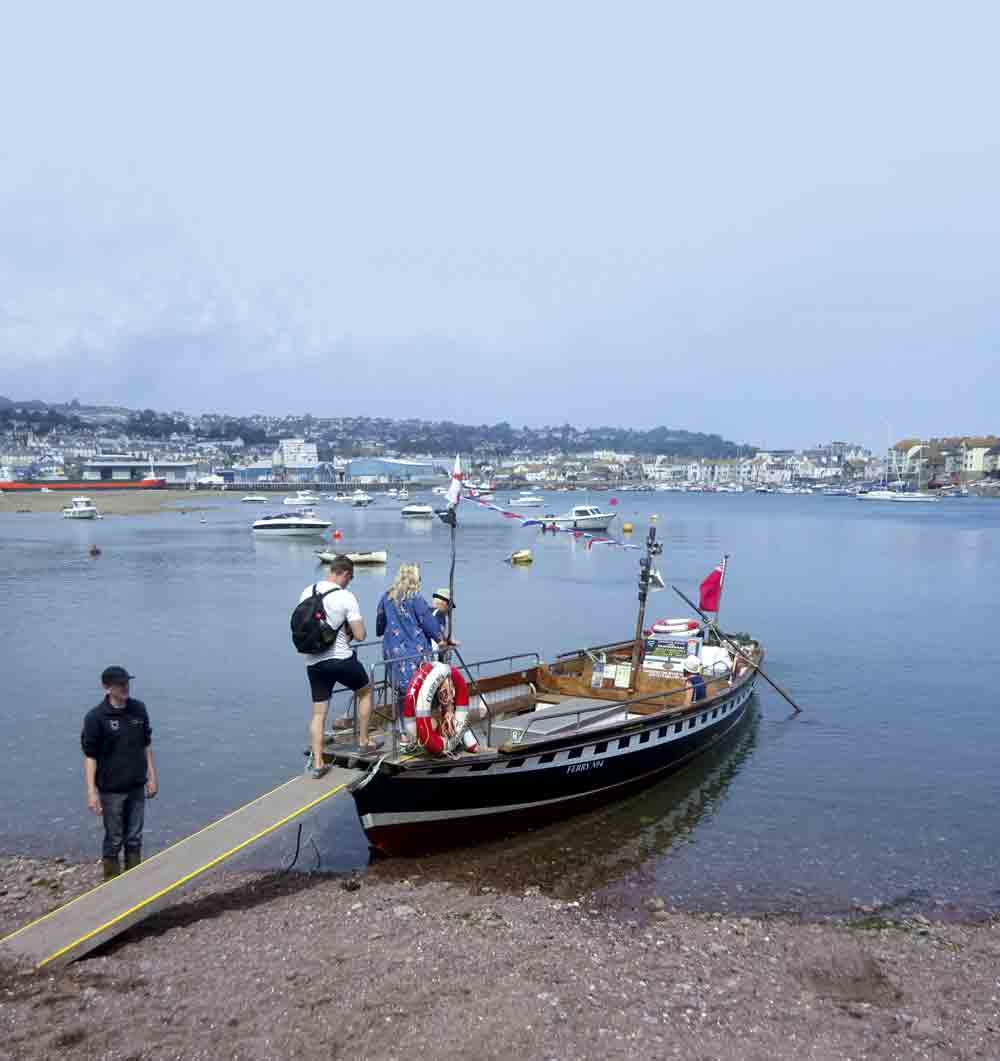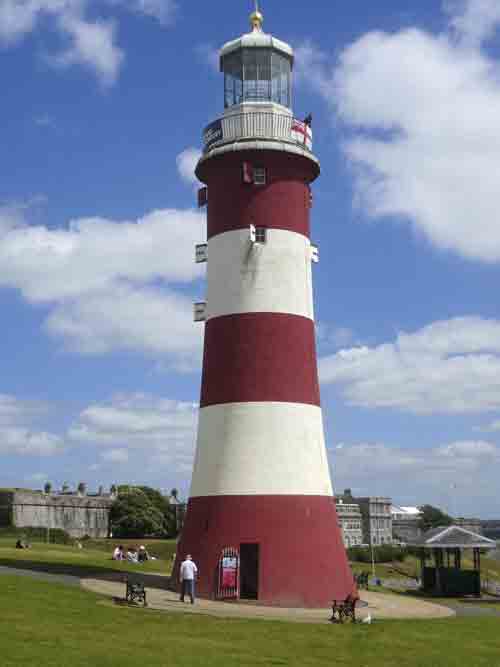Motorhome travel: The delights of delicious Devon
Words and photos by Scott Currie
We’ve come to Leadstone Camping, situated on the hill above Dawlish Warren, as it’s ideally placed to enjoy Devon’s offerings: Plymouth and the Hoe, Exeter and its cathedral, Dawlish and its sea wall. Oh, and don’t forget the clotted cream teas!
Factor in wonderful sunshine and the ditties of myriad winged songsters and my wife Jane and I are thankful that we have booked eight nights here. The site has no view of the sea but, within 200 yards, we’re sitting on the balcony of the Mount Pleasant Inn with the entire Exe Estuary laid before us. Opposite, across from the Warren sand spit, sits Exmouth, looking as pretty as a picture in the evening sun.
We walk along the sea wall. Rail enthusiasts have long held the section of railway from Starcross to Teignmouth as among their favourites. It’s also known for being washed away by storms, most recently in 2014.
A walk along the path that shares the sea wall with the railway, from Dawlish Warren to Dawlish, brings back strong memories for me of waving from the window of many a passing train to holidaymakers like ourselves. I’m also keen to photograph one of the trains on the wall.
While I’m enjoying the view of the red sandstone lump of Langstone Rock, with its sea arch, a steam loco comes around the corner. It’s long gone before I can even get my camera out of my pocket.
I make up for my disappointment at missing the train by heading straight for Gay’s Creamery in Dawlish, which is stacked with goodies: jam and fudge, pies and pasties, ales and cider and, especially, those much-longed-for scones and clotted cream.
The black swans of Dawlish
Dawlish is also home to the black swan. I’m not talking about a pub here, but the bird – and not just one. These striking creatures, with their red eyes and bills, have made a home on Dawlish Water, which flows through pleasant landscaped gardens. The black swans of Dawlish have been drawing sightseers to the town for decades as they’re said to have been introduced at the start of the twentieth century.
We’re ready for our three-mile ride to Starcross, first of all downhill to Dawlish Warren and then on to the Exe Estuary (National Cycle Route 2) trail, passing the small harbour of Cockwood. The village of Starcross is dominated by the former pumping station of the Atmospheric Railway, one of Isambard Kingdom Brunel’s remarkable, but least successful, inventions. Rolling stock was driven by vacuum produced at the pumping station. Although it was able to reach 60mph at a time when conventional steam locomotives could only reach 30mph, the Atmospheric Railway survived for just one year.

Awaiting us at Starcross is the MV Orcombe, the ferry for Exmouth, the popular town only about a mile away on the eastern banks of the estuary. With our bikes stowed in the cycle rack at Starcross railway station, we wind our way over a slightly longer route through the deeper reaches of the Exe estuary to Exmouth.
A new harbour, surrounded by modern apartments, adjoins the renovated sea wall promenade. This backs a fine expanse of sand and has a 28m high (92ft) big wheel – which offers spectacular views of the town and the Exe Estuary – overseeing everything. Exmouth’s town centre revolves around The Strand, a large square striving to achieve a European-style vibe with pavement cafés.
The return ferry to Starcross passes an island sand bar on which someone is walking their dog. I think, “Rather them than me,” as I watch the tide coming in.
The previous day’s bike ride has got Jane and I in the mood to stretch our limbs further with the target being the city of Exeter itself, some 12 miles or so away. A cycle path runs pretty much all the way and it’s all but flat, too.
The Exeter Canal
We pass through Cockwood and Starcross again before reaching the Exeter Canal, just after seeing Powderham Castle (home to the Earl of Devon).
Our aim to cross the River Exe to visit Topsham village is scuppered by the tide being out, so it’s onwards via a pit stop at the wonderful Double Locks Inn at Alphington. Suitably invigorated, we knock off the remaining couple of miles in smart time to reach Exeter.
This really is a fine city, with Roman city walls, a castle and a raft of half-timbered and Georgian buildings. The main draw is the wonderful cathedral presiding over Cathedral Yard, a large grassy area surrounded by lovely buildings. On such a sunny day as this it’s a magnet for anyone who wants to relax.
We join them – but not before visiting Warrens Bakery, which claims to be the original Cornish pasty maker, having been creating pasties since 1859. The pasty is delicious and the surroundings idyllic.
On our way back, we stop by the renovated and bustling quayside and take a ride on the tiny Butts Ferry, which is powered by the ferryman pulling on a cable stretched across the river. After browsing the artisan workshops built into the hillside, we’re on our way again, stopping for refreshment at the Turf Hotel just where the Exeter Canal drops into the estuary.

Modern trains aren’t much to my liking but, with a frequent service running down the coast, we’re on our way along the sea wall, passing through Teignmouth and Newton Abbot, before reaching Torquay. We’ve been able to bring the bikes, so ride from the station to the harbour area.
To Torquay harbour and Brixham
Torquay’s harbour is full to bursting with yachts of all sizes. Brixham is about 10 miles away across the bay and we take a 40-minute ferry trip, with the skipper delivering entertaining anecdotes and interesting facts about Torbay.
Brixham, with its multi-coloured houses piled up on the hillsides surrounding the harbour, is busy with people crabbing, eating fish and chips and enjoying ice cream. Jane and I take our picnic overlooking the outer harbour.
On our return to Torquay, we cycle over to Paignton, where I indulge my ‘going to the end of a pier’ hobby before heading back towards our campsite on the train.
Next day we reach Teignmouth after a five-mile walk from the site via the sea wall, Dawlish, Holcombe and the Teignmouth sea wall. The bikes have been left behind as the terrain is much more ‘up and down’.
While not minding that too much, I’d prefer not to have followed the coast path which, at one stage, takes us up the very steepest of hills and then deposits us, after over a mile of stamina-sapping effort, back to the main road only a couple of hundred yards from where we left it!
That minor irritation is soon forgotten as we arrive on the Teignmouth sea wall near the mouth of the Parson’s Tunnel, a much-coveted photographic location for the railway enthusiast. I still haven’t managed to get a photo of a high-speed train and, as we trek longer than the ‘one mile to Teignmouth’ that the sign suggested, not one train passes.
No, it’s not to be; neither is a walk to the end of Teignmouth’s quaint pier. The structure is having a makeover at the time of our visit. Nevertheless, Teignmouth is delightful and the view from the Ship Inn, in particular, is fantastic.
On the far side of the Teign Estuary we can see Shaldon. A fine old craft plies its trade, taking visitors across the challenging waters of the Teign’s mouth. The village is very pleasant, but we want to visit Ness Cove beach and the smugglers’ tunnel.
This beach would be inaccessible, surrounded as it is by red sandstone cliffs, had it not been for some bright sparks building a long pedestrian tunnel through the cliffs.
It takes some effort getting up and through to the tunnel but it’s worth it as the beach is all but empty, giving it a Robinson Crusoe sort of feel.
On returning to Teignmouth we take the bus, via one change in Dawlish, to get us back to the campsite.
As the railway heads inland, it passes over another favourite for rail fans, known as the Devon Banks. These long and steep climbs were once a challenge for the longer trains of yore but, once up and out of Totnes, we are treated to the gorgeous views of the South Hams on one side and up to Dartmoor on the other.

Plymouth and the final stop on the tour
We’re on our way to Plymouth for the final jaunt of our west country adventure.
I like Plymouth, despite it not feeling as vibrant as Exeter. The main shopping street is a wide, tree-lined, pedestrianised street with ‘big name’ shops and even the 1960s style isn’t too off-putting.
The seafront below the Hoe is rocky, not sand, and there are concrete sunbathing areas and a renovated outdoor lido.
It’s a delightful area, but it’s the Hoe and Smeaton’s Tower that really make the trip to Plymouth worthwhile.
The view out over Plymouth Sound from this large and grassy area is wonderful and the red and white-hooped Smeaton’s Tower Lighthouse is a stunning edifice.
There are some very fine buildings overlooking the Hoe as well. We enjoy a coffee while lapping up the vista.
The fine Hoe Seafront Walk brings to the Barbican, an area of magnificent old warehouses, sea merchants’ buildings and dozens of colourful yachts and attractive pleasure boats in the large marina. Pavement cafés and bars are prevalent and overlook the remaining fishing fleet.
So ends another fine motorhoming holiday with enjoyable cycling and walking, boat trips and pasties – and with another of those clotted cream teas, of course!

This article was originally published in the July issue of MMM magazine. Click here to buy a digital issue.








Recent Updates
Engine management lights: all you need to know
What is the engine management light? What does it mean, and what do I have to do? ...
Motorhome air suspension: all you need to know
Motorhomes are heavy and the additional weight of equipment and height of the bodywork can increase the loads ...
Motorhome WiFi: how to get better motorhome internet
Staying connected on the move is more and more essential, so relying on campsite WiFi isn't an option – here ...
A class of their own - our guide to A-class motorhomes
Thinking of trading up to an A-class, or even going straight to the top of the motorhome tree? We guide you ...
Explore overseas on a motorhome dream tour
Enjoy exotic travel in a campervan or motorhome by hiring, swapping with someone else or exporting your ...
Motorhome water systems: everything you need to know
On-board water is an important part of every motorhome – here’s everything you need to know ...
Campervanning in Europe: what you need to know
Whether you're planning a leisurely drive through the French countryside, navigating bustling city streets in ...
Campervan security: all you need to know
With thefts on the increase, it’s important to know how to keep your campervan secure and prevent campervan ...
Campervan furniture: everything you need to know
Our campervan experts guide you through all the essentials for your campervan, including tables, chairs, ...
Campervan finance: how to fund your purchase
Here we look at the different types of campervan finance available, to help you decide what’s the best option ...
Other Articles
Britain’s best used motorhomes
Want a great motorhome without paying the premium for a new one? Here's a guide to the best you can get in the pre-owned market for each layout, ...
Which motorhome? Choosing the perfect motorhome for you
Choosing a motorhome or campervan is one of the biggest buying decisions you’ll ever make, so it's important ...
Campervan washroom essentials: stay fresh on the road
Our guide will take you through the campervan washroom essentials you'll need so you're well-prepared for ...
Dogs in campervans: all you need to know
Follow our advice and your dog will enjoy campervanning as much as you do ...
Electric campervans: all you need to know
Our guide will take you through everything you need to know about electric campervans and what the future ...
Motorhome electrics: a complete guide to your motorhome electrical set-up
Motorhome electrics can dramatically enhance the convenience and comfort of your vehicle – but they can be ...
Lighting for campervans: all you need to know
We guide you through all the lighting options available for you and your campervan, including interior ...
Electric bikes for motorhomes: our ultimate guide
Read our comprehensive guide to electric bikes for motorhome owners, helping you add electric power to your ...
Our guide to 'cheap' motorhomes in 2024
If you're on the hunt for an affordable new motorhome, this is the best place to start – we've rounded up a ...
Campervans in winter: all you need to know
Here's your guide to preparing your campervan for the colder months, whether you will be using it or putting ...